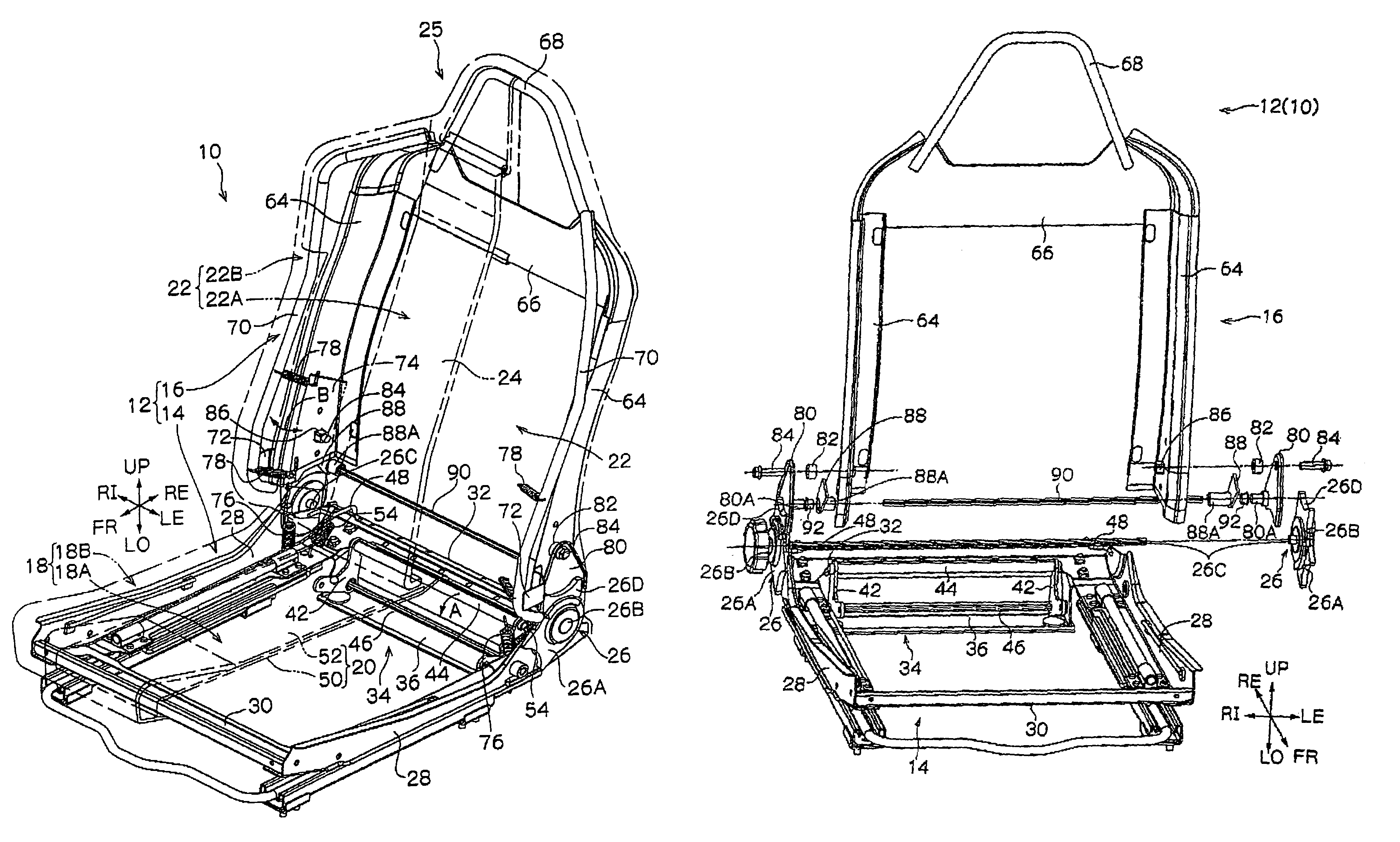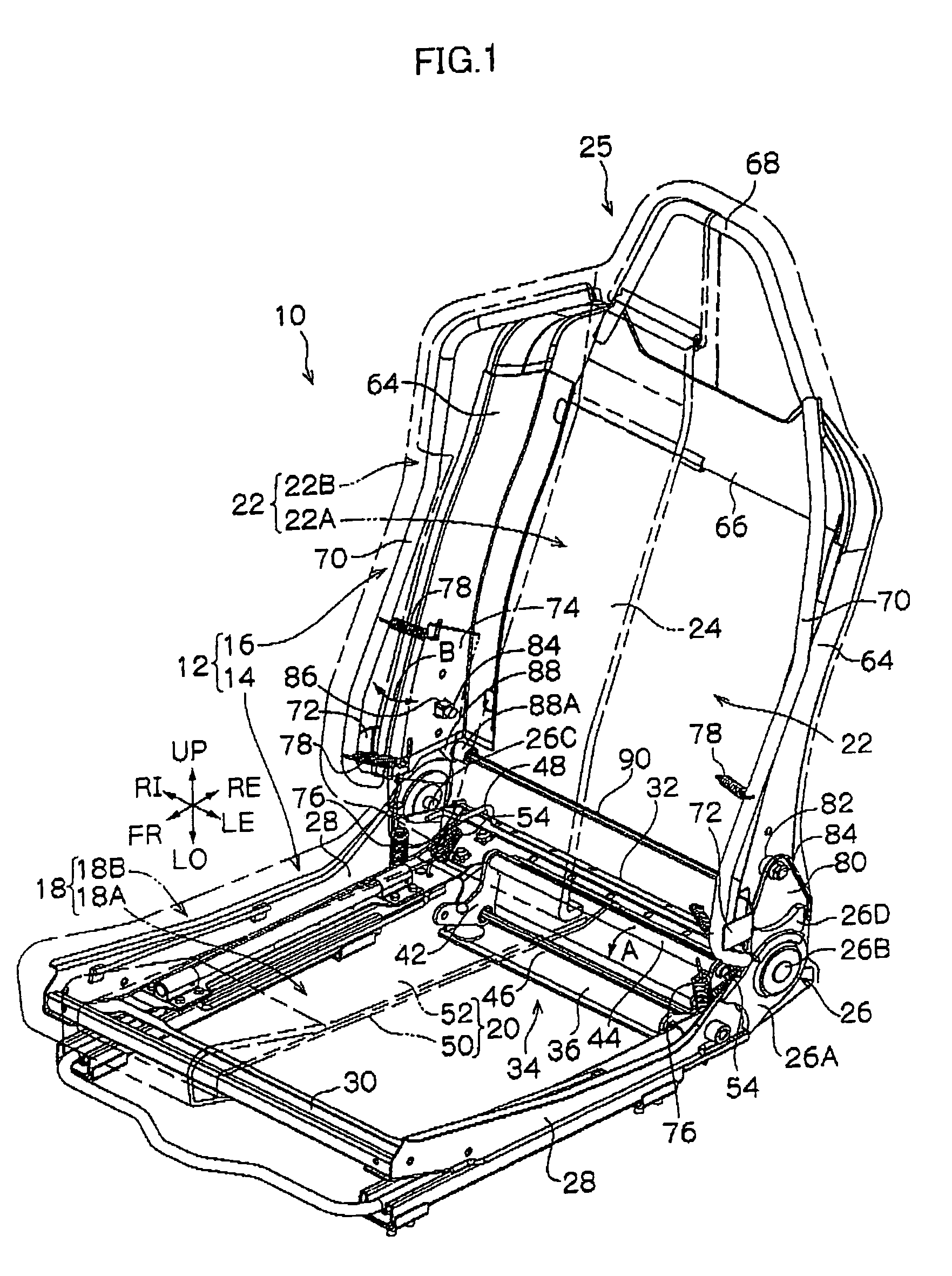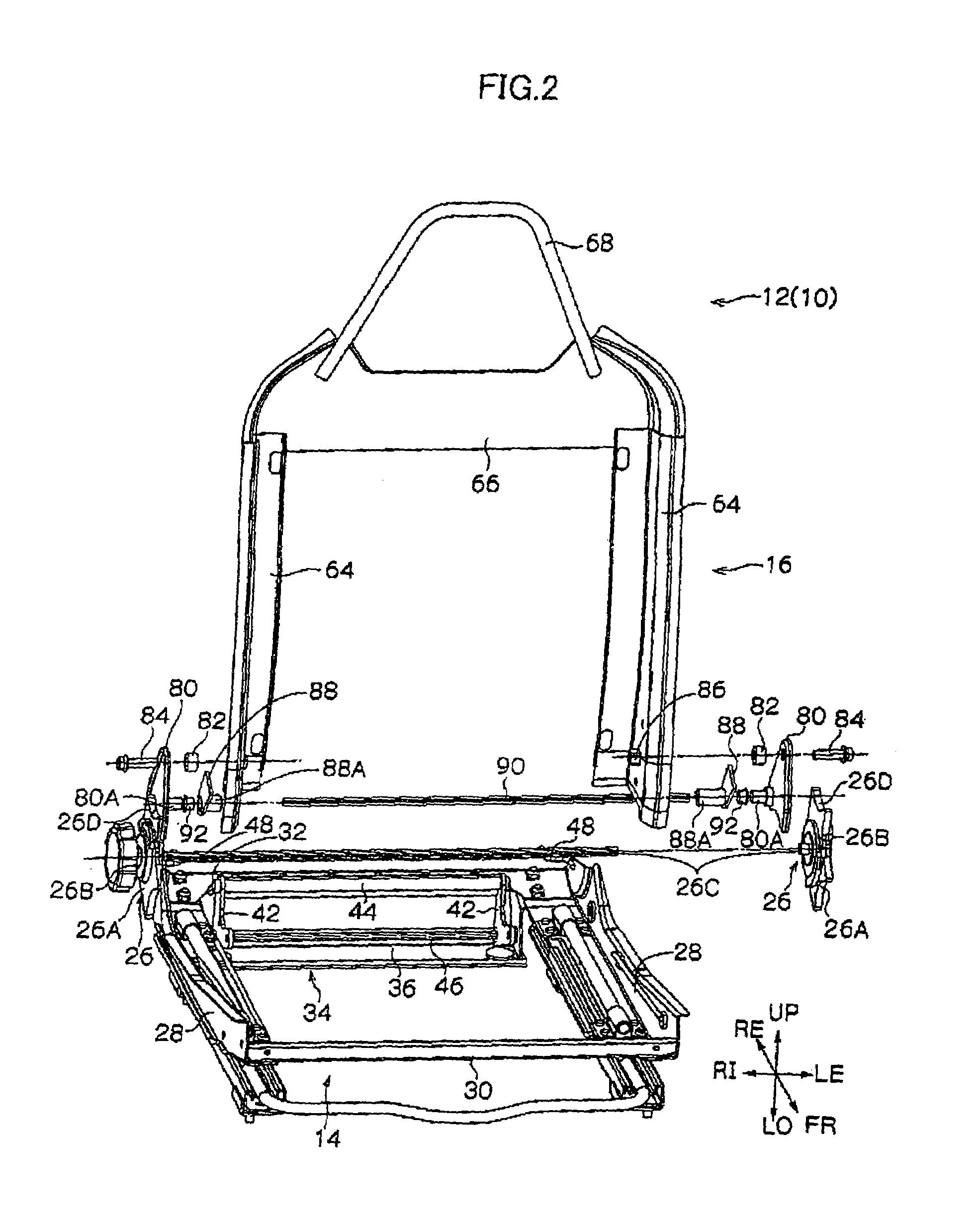Seat structure
a seat cushion and seat technology, applied in the field of seats, can solve the problems of difficult to obtain favorable vibration absorption qualities, insufficient rigidity, and damage to the seat occupant, and achieve the effects of improving the overall vibration and impact absorption qualities of the seat, increasing the tension, and increasing the dampening effect of the seat cushion
- Summary
- Abstract
- Description
- Claims
- Application Information
AI Technical Summary
Benefits of technology
Problems solved by technology
Method used
Image
Examples
second embodiment
[Second Embodiment]
[0079]Next, explanations will be given regarding a vehicle seat 100 of the second embodiment of the present invention based on FIGS. 4 through 8. It should be noted that the parts / portions that are essentially the same as those of the above first embodiment have been given the same numbers as above and explanations thereon have been omitted
[0080]The outline overall structure of the vehicle seat 100 corresponding to the perspective diagram of FIG. 1 is shown in FIG. 4, and the seat frame 12 forming the vehicle seat 100 is shown as an exploded perspective diagram in FIG. 5. As seen in these drawings, with the vehicle seat 100, the torsion bar 90 is not provided at the seatback frame 16, rather it is provided between the arm components 98 acting as the “turning component” in the present invention and attaching components 80 (seat portion frame 14), and this point differs from the vehicle seat 10 of the first embodiment. Hereafter, detailed explanations will be given....
PUM
 Login to View More
Login to View More Abstract
Description
Claims
Application Information
 Login to View More
Login to View More - R&D
- Intellectual Property
- Life Sciences
- Materials
- Tech Scout
- Unparalleled Data Quality
- Higher Quality Content
- 60% Fewer Hallucinations
Browse by: Latest US Patents, China's latest patents, Technical Efficacy Thesaurus, Application Domain, Technology Topic, Popular Technical Reports.
© 2025 PatSnap. All rights reserved.Legal|Privacy policy|Modern Slavery Act Transparency Statement|Sitemap|About US| Contact US: help@patsnap.com



